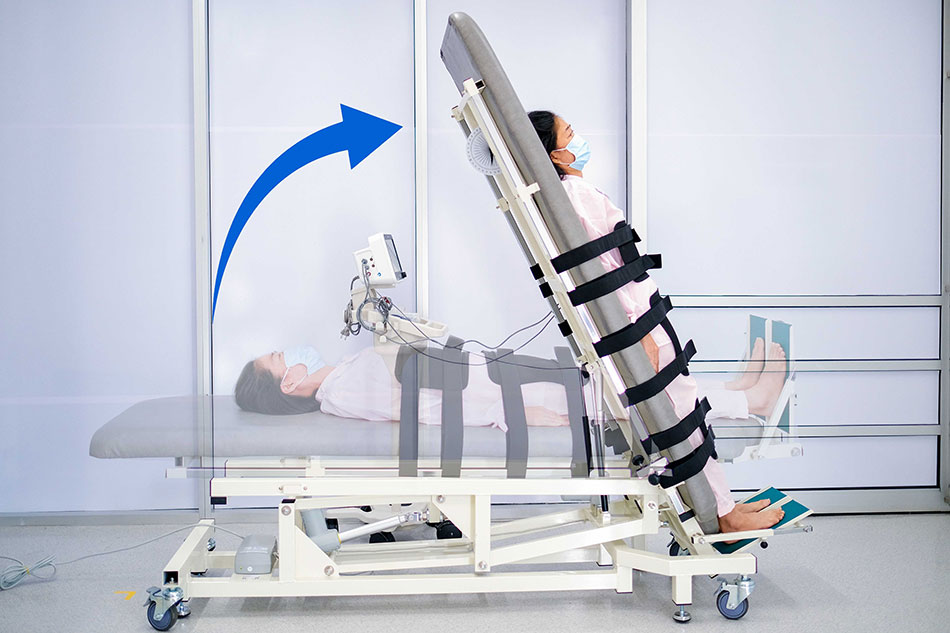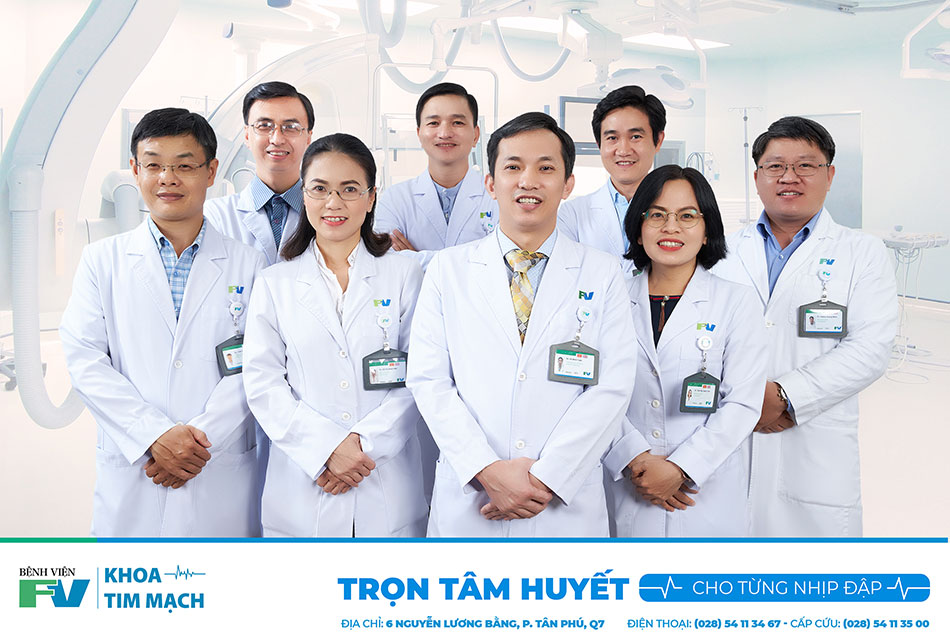The day-to-day lives of people prone to fainting for no apparent reason are deeply affected by their condition. Sudden fainting can even be life-threatening—they might suffer an episode while driving and cause an accident or fall while bathing or climbing a ladder. Many people are diagnosed with anaemia or vestibular disorders, but after a period of treatment, their disease does not improve. To evaluate and diagnose the main cause of syncope, a temporary loss of consciousness caused by a fall in blood pressure, FV is now offering the tilt table test to its patients.

The advantage of this method is that the technique is quite simple, easy to implement and safe. The tilt table test is completely non-invasive and effective in helping doctors to identify syncope due to hypotension when standing or due to reflex, and distinguishing syncope from epilepsy and psychogenic pseudo syncope.
This method is particularly useful in identifying syncope due to autonomic nervous system disorders, including primary or secondary dysautonomia, orthostatic tachycardia syndrome (POTS), and syncope due to vagal reflex.
When should the tilt table test be performed?
Your doctor will recommend a tilt table test if you have unexplained lightheadedness, dizziness, or fainting. The test will facilitate the patient’s signs and symptoms to appear, while physicians monitor their heart rate and blood pressure.
How is the tilt table test performed?
The patient is placed on a special table that can be raised from 60 to 80 degrees while nurses and doctors monitor the patient’s condition. You may be asked not to eat or drink for two hours or more before the tilt table test.

The patient lies supine on a motorised table for about five minutes. The table will be raised to an almost vertical position and maintained in this position for five to 45 minutes, depending on the reason the test was indicated. The patient will be asked to remain still and to report signs or symptoms such as nausea, sweating, dizziness or irregular heartbeat and fainting. If the patient feels uncomfortable at any point, they should notify their nurse or doctor immediately.
In case the patient does not faint or has no other symptoms after 20 minutes, the patient will be given a sublingual spray of nitro-glycerine. This medicine can promote abnormal reflexes of the nervous system, causing the person to faint. Then, the patient will remain in an upright position for another 15 to 20 minutes. The patient’s heart rate and blood pressure will be monitored at each table position to assess the cardiovascular response to each position change.
If the patient faints while the table is in the upright position, the table will be immediately returned to the horizontal position for continued monitoring. Most patients regain consciousness almost immediately.
In some cases, if changes in blood pressure and heart rate suggest that the patient is about to faint, the table is returned to a horizontal position so that the patient does not lose consciousness. When testing is complete, the patient can return to their usual activities.
The tilt table test can last about 60 minutes if the patient has stage two (intravenous drugs). If only one stage is performed, the test is usually complete within 30 to 40 minutes.
The results of the tilt table test
Depending on the results, one of FV’s cardiologists will recommend additional testing to rule out other causes of syncope. Recommendations might include appropriate diet and exercise to help patients limit the occurrence of fainting in the future. If a person has syncope due to an inhibition of the heart which causes asystole (the state of total cessation of electrical activity from the heart, often called a cardiac flatline), the doctor may suggest implanting a pacemaker.
The Cardiology Department at FV Hospital features the latest generation of synchronous equipment and is staffed by a team of highly qualified doctors, all of whom have trained intensively at prestigious medical universities in Vietnam and abroad.
FV’s cardiologists are experts in the fields of diagnosing and treating cardiovascular diseases such as high blood pressure, myocardial infarction, heart failure, arrhythmia, heart valve regurgitation, venous insufficiency, congenital heart defects, and coronary atherosclerosis.

FV Cardiology Department is committed to constantly updating its staff’s practical medical knowledge, and masterfully applies advanced techniques for accurate diagnosis, minimally invasive treatments and long-term effectiveness for patients.
In May 2018, FV Hospital began operating its Cardiovascular Intervention Centre (Cardiac Cathlab) with a total investment capital of over USD 1.6 million.
The Cathlab incorporates a highly sophisticated system of modern technologies and tools, making it an effective arm in helping doctors to diagnose and promptly treat dangerous arrhythmias. Doctors can use cardiac electrophysiology and radiofrequency ablation using 3D heart mapping systems to treat ventricular tachycardia, ventricular extrasystoles, paroxysmal supraventricular tachycardia, atrial flutter, and atrial tachycardia.
In addition, dangerous bradyarrhythmia can be treated with permanent pacemaker implantation, electric shock defibrillator implantation or myocardial resynchronisation implantation, specifically for patients with heart failure.
To make an appointment and to learn more, please contact FV’s Cardiology Department: (028) 5411 3467 or (028) 5411 3333 Ext: 1216/1165.

 Vi
Vi 












